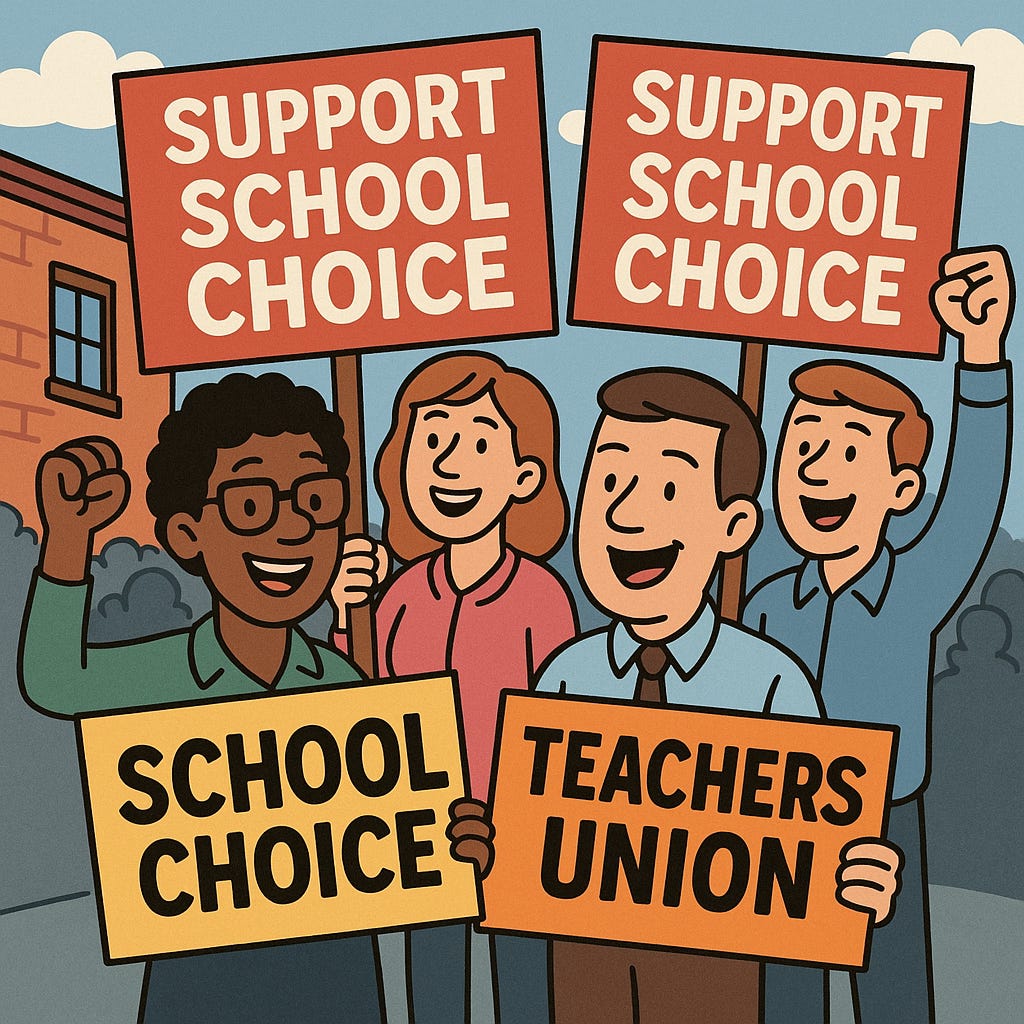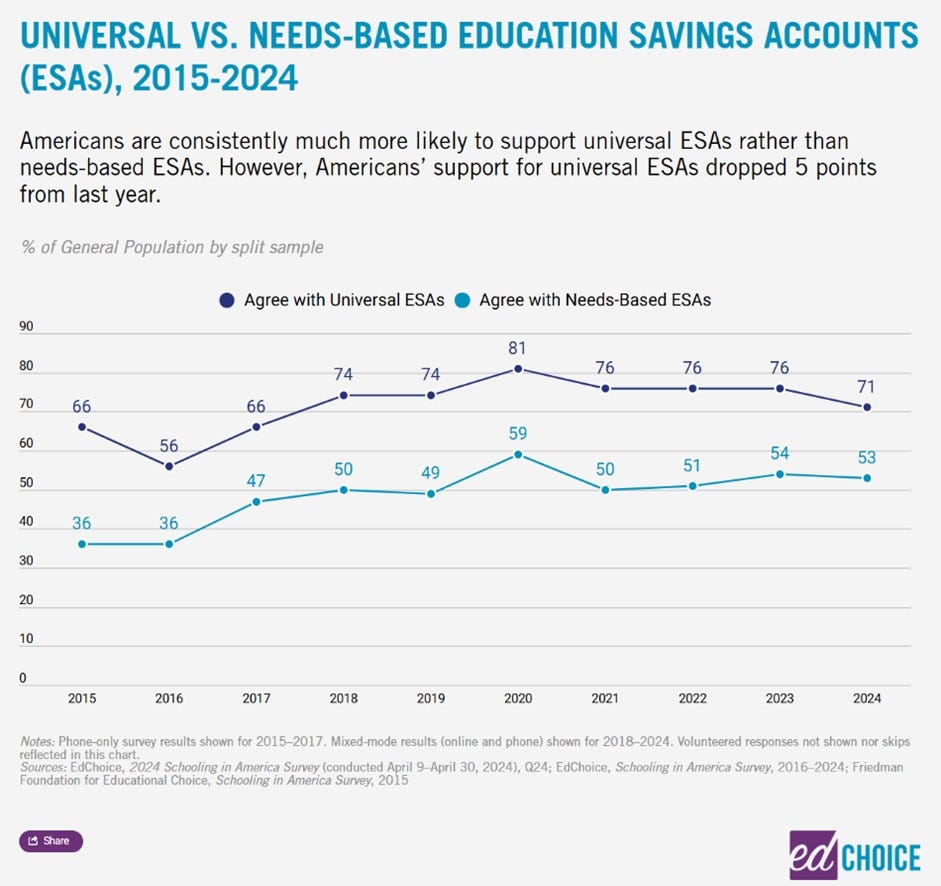Yesterday was Memorial Day , a day of remembrance across the country for the brave men and women who made the ultimate sacrifice in the name of freedom. In the spirit of the holiday, we will stick to the topic of freedom, albeit from an educational lens.
Educational freedom, broadly, is the ability to choose the educational environment or learning approach that best fits a student’s needs, values, or goals. It is enjoying something of a moment in America, with the primary vehicle being education savings accounts (ESAs). Prior to 2020, there were 6 ESA programs operating in America. Flash forward to today, there are now 21 ESA programs spread out across the country. More than half are universal, meaning any family in the state can apply to participate in the program.
The rise of ESAs can be attributed, in part, to the diverse support in public opinion. We do a lot of polling here at EdChoice. We survey the general population and school parents annually through our Schooling in America survey. In addition, through our partnership with Morning Consult, we survey the more than 2,000 Americans and over 1,000 school parents each month in the EdChoice Public Opinion Tracker. Through the Public Opinion Tracker we also survey K-12 school teachers twice per year.
As you might imagine, we include questions in every one of our polls measuring support and opposition for ESAs. We include experiments where we give some respondents a definition of ESAs and others no definition. We ask about universal versus targeted programs. And, we ask about other forms of school choice to determine relative levels of support.
We also calculate the “crosstabs” to the answers to all of these questions. Crosstab is a term of art in polling that describes breaking down answers to a question by demographic group. So, for example, a poll might be interested in measuring whether men support a political candidate or whether rural voters oppose a ballot initiative.
The crosstab data from our polling often yield surprising results. For example, we’ve observed with some regularity is that Democrat respondents are more likely to be supportive of ESAs than Republicans.
Another demographic group more supportive than not of ESAs is teachers that report being a member of a teachers’ union. This may come as a surprise given that Randi Weingarten, president of the American Federation of Teachers, is a staunch opponent of ESAs and educational freedom generally. In our most recent survey of K-12 teachers (fielded March 21-27, 2025) 60% of teachers that are a member of a teachers’ union supported ESAs without a definition of the program provided. Support jumped to 74% when a definition of ESAs was provided.
Perhaps most notable is that just a year ago, in our spring 2024 survey of teachers, only 40% of teachers that reported being a teachers’ union member supported ESAs without a definition attached. The 20-point jump in the span of a year is pretty remarkable.
For context, in our most recent survey of Americans (fielded April 10-13, 2025), only 46% of Americans signaled support for ESAs without any definition provided. Teachers that are part of a union being 14-points more likely than Americans to support ESAs without a definition provided was not on my bingo card. Even with a definition, teachers’ union members are 9-points more likely than Americans to support ESAs.
What about universal ESAs? My colleague Ed Tarnowski pointed out in a recent article that “universal eligibility – once an impossible standard – is quickly becoming the baseline for quality school choice programs.” Are universal ESA programs more popular?
Yes. Yes they are.
In the April 2025 survey of Americans, 62% agreed that ESAs should be available to all families, regardless of income or special needs. On the other hand, 50% of Americans felt that ESAs should be made available based on financial need. This is not just a flash in the pan, as we’ve been gauging sentiment towards universal ESAs since 2015 through our Schooling in America survey. As seen in the chart below, Americans are consistently more likely to favor universal ESAs compared to needs-based ESAs.
Teachers that are a member of a union are aligned with the general public on this question. When asked whether ESAs should be made available to all families regardless of income or special needs, 64% of teachers in a union agreed while 55% of teachers’ union members felt that ESAs should be made available based on financial need.
Our polling data has, on more than one occasion, pointed out that the conventional wisdom on certain demographic groups and their support or opposition towards educational choice is not corroborated by the data. This is one such example, and I’m sure there are more hidden in the many crosstabs files we have publicly available on our website. For those interested, our polling reports, crosstabs, and questionnaires are available here.






